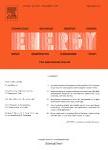版权所有:内蒙古大学图书馆 技术提供:维普资讯• 智图
内蒙古自治区呼和浩特市赛罕区大学西街235号 邮编: 010021

作者机构:Hunan Univ Key Lab Adv Design & Simulat Tech Special Equipmen Minist Educ Changsha 410082 Peoples R China China Inst Atom Energy Dept Reactor Engn Technol Res Beijing 102400 Peoples R China
出 版 物:《ENERGY》 (Energy)
年 卷 期:2025年第330卷
核心收录:
学科分类:0820[工学-石油与天然气工程] 08[工学] 0807[工学-动力工程及工程热物理]
基 金:National Natural Science Foundation of China [52175224 52205262]
主 题:CFD Deep learning Printed circuit heat exchanger Thermal-hydraulic Sodium-cooled fast reactors
摘 要:The heat exchanger is the key for connecting the primary and secondary circuits in sodium-cooled fast reactors (SFR), and thermal-hydraulic characteristics estimation is vital for design and safety analysis of SFR. While conventional computational fluid dynamics (CFD) methods require expensive computational cost and physicsinformed neural-networks (PINNs) depend on well-developed data, but only limited or no high-fidelity data can be obtainable in real SFR. This study presents effective hybrid-PINNs (h-PINNs) to predict the high-fidelity flow and temperature distributions within printed circuit heat exchanger (PCHE) flow channels from low-fidelity data. The h-PINNs approach primarily consist of three deep neural-networks (DNNs): the first is a data-driven DNN trained to establish the relationship between input coordinates and output low-fidelity data;the second, also data-driven, investigates the nonlinear correlation between low-fidelity and high-fidelity data;and final DNN incorporates physics constraints to refine high-fidelity data generated by second DNN. The performance of presented h-PINNs is evaluated by numerical examples of sodium flow in PCHE flow channels with differently shaped fins. The h-PINNs accurately estimate the velocity and temperature distributions, achieving R2 indicators of over 97.54 % with a few high-fidelity data and 95.54 % without any high-fidelity data. The proposed approach can potentially apply to other heat transfer prediction challenges associated with energy conversion equipments.